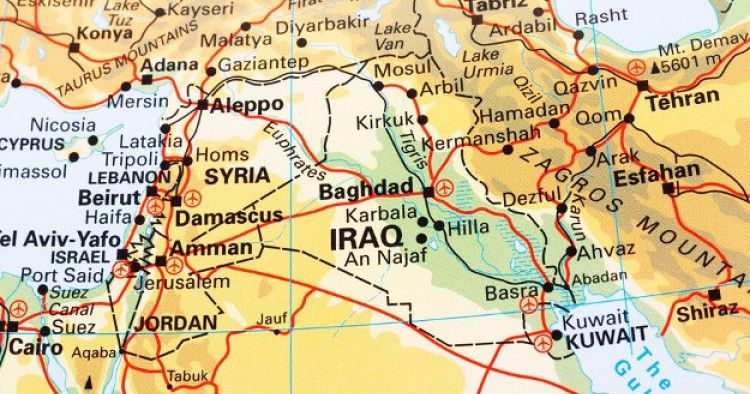The U.S.-led coalition announced today that it “destroyed additional pro-Syrian regime forces that advanced inside the well-established de-confliction zone in southern Syria.” The U.S. Central Command said in a statement that “despite previous warnings, pro-regime forces entered the agreed-upon de-confliction zone with a tank, artillery, anti-aircraft weapons, armed technical vehicles and more than 60 soldiers posing a threat to Coalition and partner forces based at the At Tanf Garrison.” It added: “The Coalition issued several warnings via the de-confliction line prior to destroying two artillery pieces, an anti-aircraft weapon, and damaging a tank.” The Centcom statement, though, emphasized that the strike does not represent a shift in U.S. policy in Syria. “The Coalition does not seek to fight Syrian regime or pro-regime forces but remains ready to defend themselves if pro-regime forces refuse to vacate the de-confliction zone,” it said, calling on “all parties in southern Syria to focus their efforts on the defeat of ISIS, which is our common enemy and the greatest threat to regional and worldwide peace and security.”
Comment: The coalition attack against pro-regime forces was destined to happen. On May 18, a coalition aircraft targeted an Iranian-directed convoy that was advancing into the de-confliction zone near al-Tanf in southern Syria. The attack was aimed to send a clear signal to Tehran and Damascus that the U.S. military will defend its personnel and Syrian rebel groups it is training and advising in the al-Tanf region for the fight against the Islamic State. But according to Iranian media outlets, Iranian-led militia forces have been marching ahead southward defying U.S. warnings – raising the likelihood of more direct confrontation between Iran-controlled forces and the U.S. military and its allies in the region.
“The resistance forces are making efforts to reach the al-Tanf region, which is occupied by the Free Syrian Army,” Fars News Agency, which is affiliated with the Islamic Revolution Guards (I.R.G.C.) reported days after the first U.S. strike. Another Fars report claimed that the Syrian Army has also deployed forces in al-Suwayda region close to the Jordanian border and “managed to advance more towards al-Tanf border-crossing in Southern Homs to foil a US-led plan for occupying Southern Syria.”
Both Tehran and Damascus sees the increased military presence of the U.S. military personnel training and advising the Syrian opposition groups as a major threat. I.R.G.C. media outlets claim that the U.S. military has beefed up its presence in southern and eastern Syria in order to block the Iranian-supported forces to link the land routes between Syria and Iraq. “America, Jordan and England have taken measures to create a security belt along the Syrian-Iraqi border. The aim of this operation is to counter the resistance front and cut off the land route between Iraq and Syria,” wrote Fars News Agency. But an even bigger concern for Tehran and Damascus is that the U.S. support for anti-regime rebel forces could threaten their territorial gains once the Islamic State is defeated.
The spokesman of Jaysh Usud al-Sharqiya – the Lions of the East Army, a Syrian rebel group affiliated with the Free Syrian Army in the south – said that Iran-backed militia forces and the Syrian Army are pursuing two objectives in the Syrian Desert: First, they want to bring under siege rebel groups associated with the Free Syrian Army; and second, they want to consolidate control over air and military bases under their control in the region. Rebel forces have also warned that the Syrian Army and Iranian-backed militia are trying to gain control over the strategic Damascus-Baghdad highway to allow free movements of Iraqi militias into Syria and maintain a sustainable weapons supply route for Iranian weapons in the region.
The Middle East Institute (MEI) is an independent, non-partisan, non-for-profit, educational organization. It does not engage in advocacy and its scholars’ opinions are their own. MEI welcomes financial donations, but retains sole editorial control over its work and its publications reflect only the authors’ views. For a listing of MEI donors, please click here.












